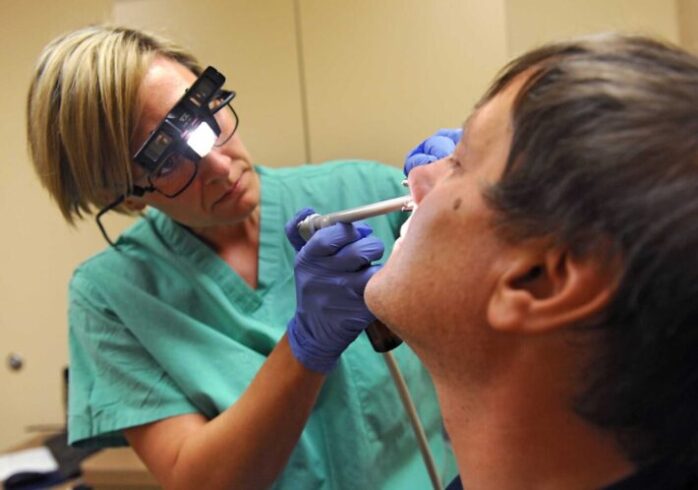
Sinusitis is the inflammation or infection of the sinuses. The sinuses are tiny spaces which are located in the cheeks and forehead around the eyes. Sinusitis can cause a feeling of heaviness, pain and discomfort in the head. If you suffer from sinusitis frequently, then you are probably going to have facial pain and nasal congestion which would interfere with your daily activities.
The symptoms can last for several weeks and it can recur anytime. A balloon sinuplasty procedure helps to provide relief to patients with chronic sinusitis and rhino-sinusitis by opening up blocked nasal passages.
In order to conduct this procedure, you will need to find the right clinic that hires experts suitable for the job. In the article below, you can read more about sinuplasty procedure and you will get some recommendations about where you can do it.

What is the Balloon Sinuplasty Procedure?
It is a type of endoscopic nasal surgery which has been inspired from angioplasty where balloon catheter dilation is used to open clogged blood vessels in the heart. This is a minimally invasive procedure which can be used to treat the early stages of chronic sinusitis.
The balloon sinuplasty treatment does not require any incisions or removal of bone or tissue. The procedure uses a small, flexible balloon to open the specific sinus passages. This procedure can be used to dilate some or all the three major nasal sinuses enabling the sinuses to be cleared and drained.
The patients who need this procedure have inflamed sinus membranes, which prevents mucus and pus discharge resulting in congestion. When this condition persists, the inflamed nasal passages can interfere with breathing, causing symptoms of facial pain and jaw ache. Balloon sinuplasty helps doctors to widen congested nasal passages and flush out the blocks with a saline solution.
According to The ENT Clinic specialists, Dr Jeeve, Dr Annabelle and Dr Hobbs this procedure is conducted with the use of local anesthesia. They use a small balloon of 6 mm in diameter and dilate this balloon into the sinus passages. The entellus balloon system from Stryker is used. Following the procedure, the mucus is made to drain normally. It ultimately alleviates the pain and congestion together with nasal discharge associated with the condition. For more information on how this procedure works, you can check out entclinic.sg or get in touch with them and ask some follow up questions that you might have after reading this article.
The healing period following this procedure is short as there is no cutting involved in performing the balloon sinuplasty. The surrounding tissues and the patient’s natural sinus openings are preserved.
This procedure is not suitable for ethmoid sinus diseases. Individuals with this condition are not fit to undergo balloon sinuplasty. The otolaryngologists will do an accurate diagnosis and are careful in identifying the patients who can undergo this procedure.

Why should you not worry much about the balloon sinuplasty procedure?
There are many advantages of having a balloon sinuplasty procedure over other surgeries.
- Fast Recovery: As it is a simple and minimally invasive procedure, the recovery time is short compared to other more invasive surgeries. Generally within two days following the procedure, the patients can return to their routine activities making it a suitable procedure for those who have a busy schedule.
- Minimally Invasive: As there are no cuts or incisions made to the bone or tissue, there is no scarring and minimal bleeding.
- Quick Procedure: There is no requirement for general anesthesia and the procedure does not require a hospital admission.
- Safe Procedure: This is a very safe and efficient procedure with less scarring and post-procedure infections. There is only a low risk of unintentional tissue and structural damage.

Are there any complications with this procedure?
This procedure can only bring in minor side effects and these include:
- Nasal, forehead and cheek tenderness
- Slight bleeding or bloody drainage for a few days
- Slight swelling in the nasal passage and in facial area
- Congestion
- If sinuses are not cleaned properly, then an infection can occur.
In extremely rare cases this procedure has been reported to cause severe symptoms which damage the structures that separate the brain from sinuses. Also although a rare complication sinuplasty has occasionally interfered with the sense of smell. Finally, exposure to anaesthesia does have a risk of severe adverse reactions like breathing difficulty.

How do I know if I am eligible for the balloon sinuplasty procedure?
Individuals who have chronic sinusitis, – that is having a sinus infection which lasts for more than 3 months or someone with recurrent sinusitis episodes.
Following a physical examination and taking of medical history doctors may recommend to perform a balloon sinuplasty. Often the first line of treatment is usually medication, however, if the chronic sinusitis is not going away and it is bothersome for your daily routine then it is a great idea to have a balloon sinuplasty performed.
In addition, your doctor might suggest a balloon sinuplasty if you have:
- Chronic sinus headaches
- Yellow or green nasal discharge with frequent congestion
- Chronic congestion
- Recurrent migraine headaches including sinus symptoms
- Facial pressure and pain
- At least four or more episodes of acute sinusitis annually.
The ENT doctor will ask you to perform a CT scan to understand the extent of the sinusitis by studying the disease anatomy. This will allow the doctor to evaluate if balloon sinuplasty is the best procedure.

How long does recovery take?
Generally an individual can leave the premises following the procedure in a few hours and then return to their regular activities within a day or two. This procedure may leave you slightly tired, and make you have tenderness and congestion with a bloody drainage for a week following surgery.
In addition your ENT doctor might advise you to refrain from blowing your nose in the first few days following surgery. It is also a good practice to have rest and avoid strenuous exercises for at least a week following sinuplasty. Sleeping with the head and neck in an elevated position promotes drainage. If there are any uncomfortable symptoms then over-the-counter anti-inflammatory medications would be helpful.





